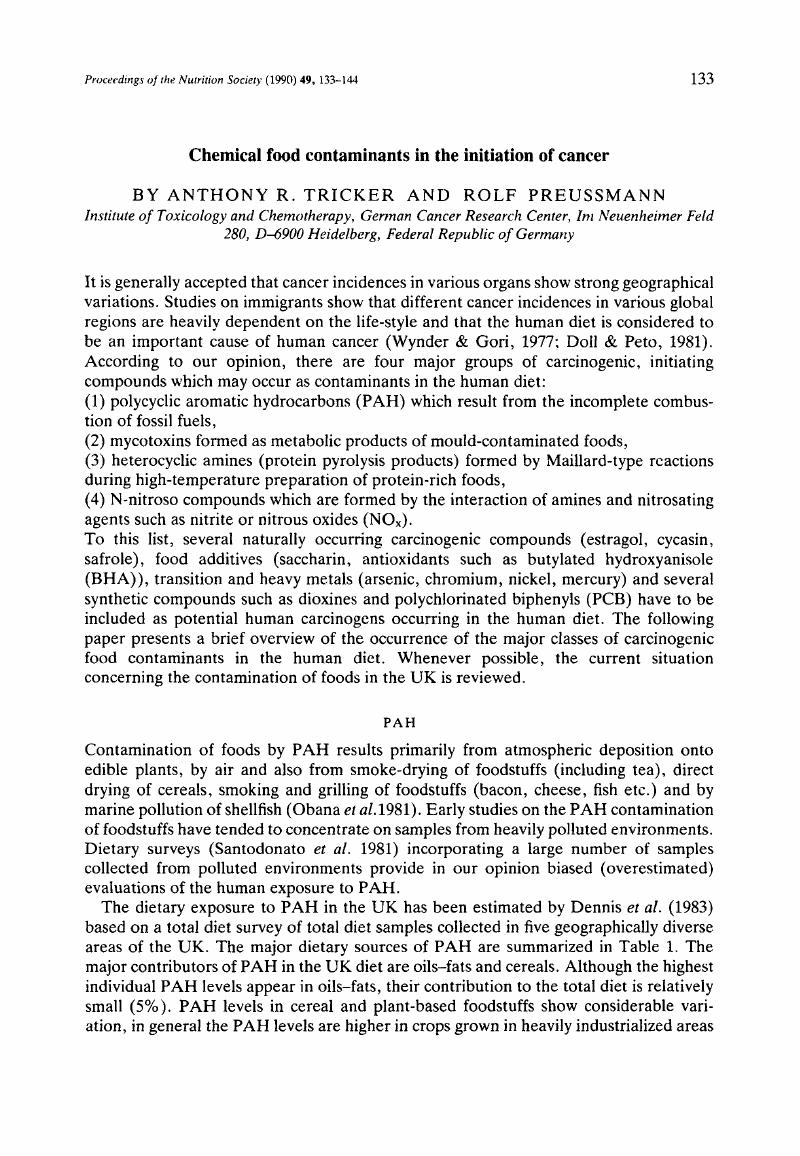Crossref Citations
This article has been cited by the following publications. This list is generated based on data provided by Crossref.
de Angelis, Rebeca C.
Terra, Ilza C. M.
Scialfa, Julieta H.
and
Klemps, Itamar F.
1996.
Dietary nitrite and scavenger antioxidants trace elements.
International Journal of Food Sciences and Nutrition,
Vol. 47,
Issue. 1,
p.
23.
Ahmed, Mohamed Tawfic
Abdel Hadi, El-Sayed
El Samahy, S
and
Youssof, K
2000.
The influence of baking fuel on residues of polycyclic aromatic hydrocarbons and heavy metals in bread.
Journal of Hazardous Materials,
Vol. 80,
Issue. 1-3,
p.
1.
Mansour, Sameeh A.
2008.
Reviews of Environmental Contamination and Toxicology Vol 196.
Vol. 196,
Issue. ,
p.
1.
Mansour, Sameeh A
2009.
Persistent organic pollutants (POPs) in Africa: Egyptian scenario.
Human & Experimental Toxicology,
Vol. 28,
Issue. 9,
p.
531.
Mansour, Sameeh A.
Belal, Mohamed H.
Abou-Arab, Asem A.K.
Ashour, Hany M.
and
Gad, Marwa F.
2009.
Evaluation of some pollutant levels in conventionally and organically farmed potato tubers and their risks to human health.
Food and Chemical Toxicology,
Vol. 47,
Issue. 3,
p.
615.
Mansour, Sameeh A.
Belal, Mohamed H.
Abou-Arab, Asem A.K.
and
Gad, Marwa F.
2009.
Monitoring of pesticides and heavy metals in cucumber fruits produced from different farming systems.
Chemosphere,
Vol. 75,
Issue. 5,
p.
601.
Carović-Stanko, Klaudija
Orlić, Sandi
Politeo, Olivera
Strikić, Frane
Kolak, Ivan
Milos, Mladen
and
Satovic, Zlatko
2010.
Composition and antibacterial activities of essential oils of seven Ocimum taxa.
Food Chemistry,
Vol. 119,
Issue. 1,
p.
196.
Mansour, Sameeh A.
2011.
Advances in Food Protection.
p.
73.
Mansour, Sameeh A.
2012.
Sustainable Potato Production: Global Case Studies.
p.
493.
Cheraghi, Mehrdad
Lorestani, Bahareh
Merrikhpour, Hajar
and
Rouniasi, Nasim
2013.
Heavy metal risk assessment for potatoes grown in overused phosphate-fertilized soils.
Environmental Monitoring and Assessment,
Vol. 185,
Issue. 2,
p.
1825.
Wang, Jianlong
and
Susan Zhou, H.
2014.
Food Chemical Hazard Detection.
p.
291.
Akinyele, I.O.
and
Shokunbi, O.S.
2015.
Concentrations of Mn, Fe, Cu, Zn, Cr, Cd, Pb, Ni in selected Nigerian tubers, legumes and cereals and estimates of the adult daily intakes.
Food Chemistry,
Vol. 173,
Issue. ,
p.
702.
Mansour, Sameeh A.
2017.
Analysis of Food Toxins and Toxicants.
p.
537.
Li, Huidong
Zhu, Duanwei
Lu, Xiao
Du, Hongxia
Guan, Shuai
and
Chen, Zilei
2018.
Determination and risk assessment of sixteen polycyclic aromatic hydrocarbons in vegetables.
Journal of Environmental Science and Health, Part A,
Vol. 53,
Issue. 2,
p.
116.
Issa, Asmaa Bayoumi
Yassin, Khaled
Loutfy, Naglaa
and
Ahmed, Mohamed Tawfic
2018.
Risk assessment of some organic contaminants: a case study based on food consumption in Tanta and Ismailia cities, Egypt.
Environmental Science and Pollution Research,
Vol. 25,
Issue. 34,
p.
34212.
Gao, Yu
Li, Xiaoping
Dong, Jie
Cao, Yuhan
Li, Tao
and
Mielke, Howard W.
2020.
Snack foods and lead ingestion risks for school aged children: A comparative evaluation of potentially toxic metals and children’s exposure response of blood lead, copper and zinc levels.
Chemosphere,
Vol. 261,
Issue. ,
p.
127547.
Abuo El-kasem, Sameh A. A.
Naiel, Mohamed H. F.
Mubarak, Mohamed H.
Megahed, Fatma I. A.
and
El-Deeb, Gehad S. S.
2023.
Assessment of pesticide residues in vegetables selected from different Egyptian governorates.
Highlights in BioScience,



